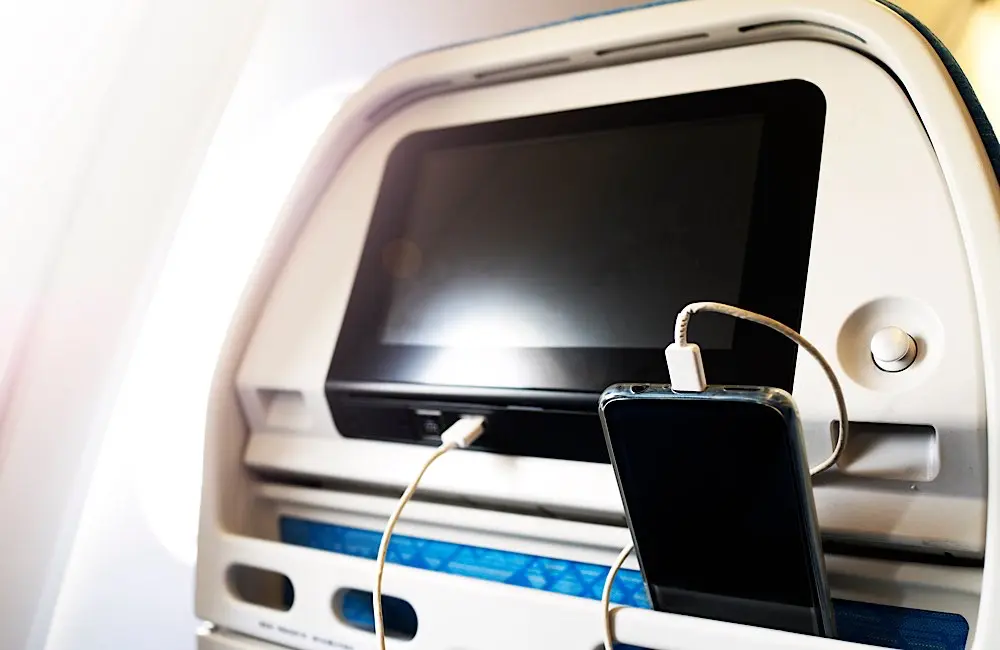Your power bank might be fully charged—but on some flights, it’s now basically useless. A growing number of international airlines flying to Australia have banned passengers from using portable chargers onboard, raising serious questions about how travellers can stay powered up at 30,000 feet.
From 1 April 2025, Singapore Airlines and its low-cost subsidiary Scoot rolled out new inflight rules to stop passengers from using power banks to charge their phones, tablets or laptops mid-air. And they’re not alone.
At least five other carriers with routes in and out of Australia have introduced similar rules in recent weeks, and travel insiders say it’s only a matter of time before more follow.
What’s behind the crackdown?
It’s all about safety. Over the past year, there have been several incidents globally involving overheating or faulty lithium-ion batteries—especially in power banks. While these portable chargers are essential for many modern travellers, some airlines are no longer willing to take the risk.
Renos Rologas, General Manager ANZ at FCM Travel, says the shift goes beyond standard aviation regulations.
“There has long been concern of the safety and reliability of portable chargers, and we’re starting to see carriers take extra precautions beyond the aviation industry’s current requirements,” he said.
“A lot of Asian carriers are introducing the new requirements, and it includes many that Australians know and frequent, so it’s important that travellers understand these new restrictions and the impact it will have on them.”

Which airlines have made the move?
The restrictions vary slightly by carrier, but the common thread is this: if you’re hoping to top up your phone using your power bank mid-flight, you may be out of luck.
Here’s the current list of carriers with confirmed portable charger restrictions in place:
- Singapore Airlines – from 1 April 2025
- Scoot – from 1 April 2025
- China Airlines – March 2025
- Thai Airways – March 2025
- EVA Air – March 2025
- Korean Air – from 1 March 2025
- Asiana Airlines – from 1 March 2025
Some carriers, like Korean Air and Asiana, have gone a step further by banning power banks from being stored in overhead lockers altogether. Passengers must now keep them on-hand and visible at their seat for the duration of the flight.
That’s on top of the standard international rule that power banks are strictly prohibited from checked luggage.
What’s Qantas’ stance?
Qantas hasn’t introduced a new ban—but it doesn’t recommend using power banks onboard either.
According to its official guidance: “While we don’t recommend passengers use power banks onboard, they are not prohibited by aviation regulation except for take-off and landing.” The airline also reminds passengers that all spare batteries and power banks must be carried in the cabin, not checked baggage.

More details are available on Qantas’ dangerous goods page.
So… how do you stay charged?
For business travellers, frequent flyers, and anyone relying on inflight productivity (or entertainment), this shift could throw a serious spanner in the works. Especially as some carriers provide only USB-A or AC charging facilities. For those using USB-C, or wanting to charge a laptop, sometimes portable charges can be the only solution.
But there are ways to adapt. FCM Travel has issued a list of practical tips to help travellers stay connected without falling foul of the new rules.
“Safety is the priority, but there are workarounds and other strategies to making sure you’re keeping charged and connected, particularly on the longer haul trips,” Rologas said.
FCM Travel’s 8 tips to stay powered up without breaking the rules
- Know before you go
Airline policies differ. Check your carrier’s latest inflight battery and charging rules before you board. - Charge everything at the gate
Whether you’re in a lounge or just near a café, use the airport time to top up all your devices. - Carry the right cord
A USB charging cable (not just a plug) lets you use seat-back USB ports—if allowed on your airline. - Rethink your devices
Laptops are power-hungry and hard to charge in-flight. Tablets offer similar functionality, take up less space, and are easier to top up onboard. - Use airline entertainment when available
Save your device battery by tapping into built-in screens instead of streaming from your phone or tablet. - Avoid sketchy USB ports
Public charging stations can be compromised by cybercriminals. Use with caution, or carry a data blocker if possible. - Buy smart
Stick to certified, branded power banks from reputable manufacturers. Cheaper or unregulated options carry a higher risk. - Never check your power bank
This rule hasn’t changed: portable chargers must be in your cabin baggage. Always.
More changes on the horizon?
FCM Travel says this might just be the beginning.
“We’ve seen at least seven airlines begin introducing restrictions on using and charging portable charging devices in the aircraft, and I expect we will see others follow suit within time,” Rologas said.
With safety taking precedence and inflight tech under scrutiny, the days of unlimited powerbank use may be numbered. For now, knowing the rules—and planning around them—is key.






